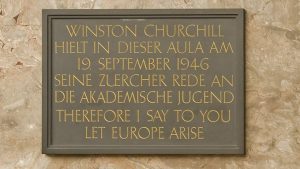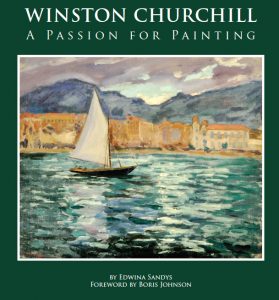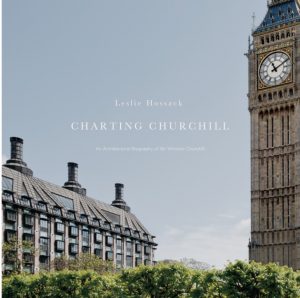Bulletin #98 - Aug 2016
Churchilliana
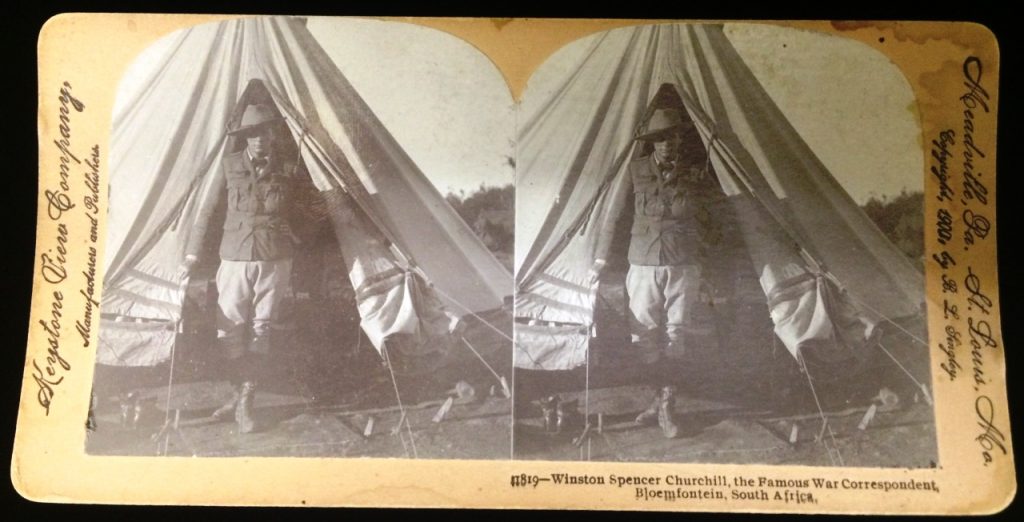
August 6, 2016
Churchill Collectables: Boer War Stereoscope Card
By BRIAN KRAPF
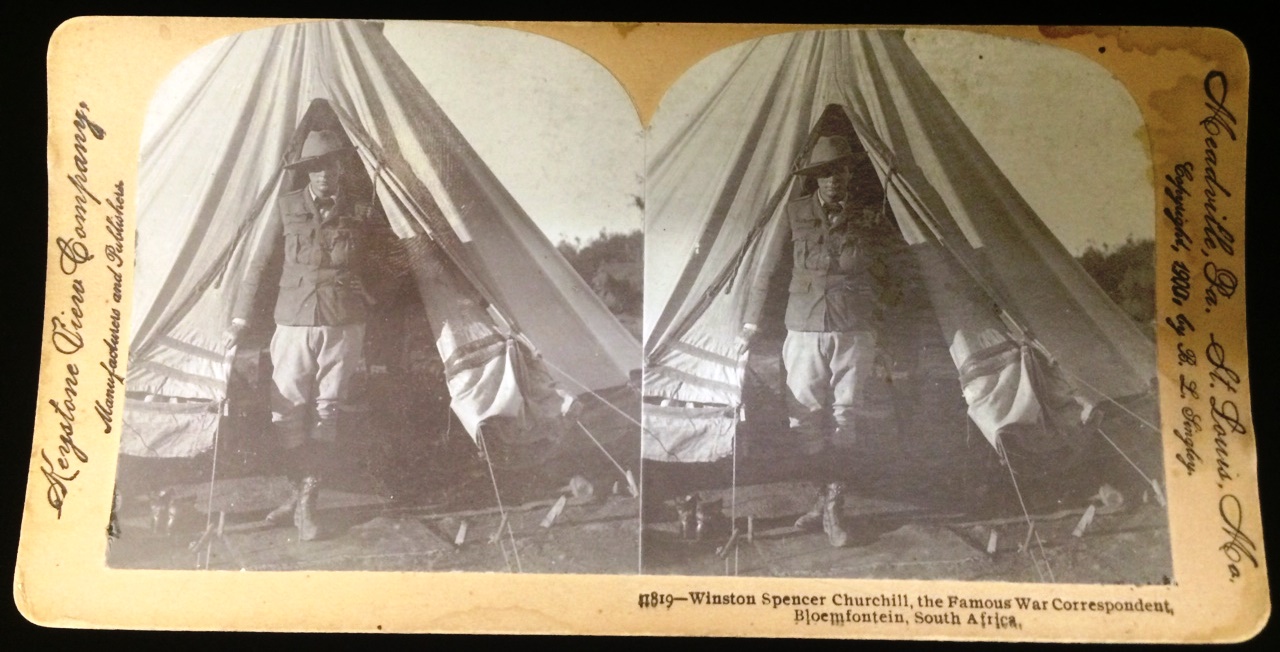
This stereoscope card is a photographic image of Churchill as a war correspondent during the Boer War. It was produced in 1900 by an American manufacturer, the Keystone View Company, as part of their Boer War images series. This stereoscope card is highly prized amongst Churchilliana collectors. It is one of the earliest career images of WSC. Also, while other cards from Keystone’s Boer War series are readily available on the open market, it is very difficult to obtain and seldom appears at auction.
For those unfamiliar with stereoscopes, this was a home entertainment device popular from the 1850’s through the 1930’s. Similar to a more modern View Master, a two-image card would be inserted into the viewer; through the use of double lenses, the user would see one fused image, complete with a terrific three-dimensional look. Stereoscopes attained their height of popularity in the Victorian era and were as popular in most living rooms as a piano. Through the use of this device, the user could purchase a series of cards on various topics and be taken instantly to distant areas of the world, explore events reported in the daily newspapers and even see exotic foreign animals and plants. It is fitting, then, that a Boer War series would be published, allowing images of the war in far off South Africa to be viewed in the comfort of one’s living room, thousands of miles away.
By the time this stereoscope card was published, Churchill had already attained notoriety for his famous escape from Boer imprisonment in Pretoria. Rather than returning home immediately, Churchill rejoined General Redvers Bulller’s army on its march to relieve British troops at the Siege of Ladysmith and to retake Pretoria. Although he continued as a war correspondent for The Morning Post with a salary of £250 per month, he also obtained a commission in the South African Light Horse. He later recounted the events with articles in The Strand magazine; a book about his escape, From London to Ladysmith via Pretoria; his subsequent involvement in the campaign, Ian Hamilton’s March; and finally in his memoir My Early Life.
Brian Krapf formerly served as President of the American Political Items Collectors, which is devoted to the preservation and study of America’s political heritage. He has been honored with APIC’s highest award: induction into the organization’s Hall of Fame. Items from the Krapf collection have been featured in History Channel documentaries and also in major print media publications. He has also served as a national advisor to eBay in the areas of security and fraud detection, and he designed eBay’s current political memorabilia listing categories.
Subscribe
WANT MORE?
Get the Churchill Bulletin delivered to your inbox once a month.

